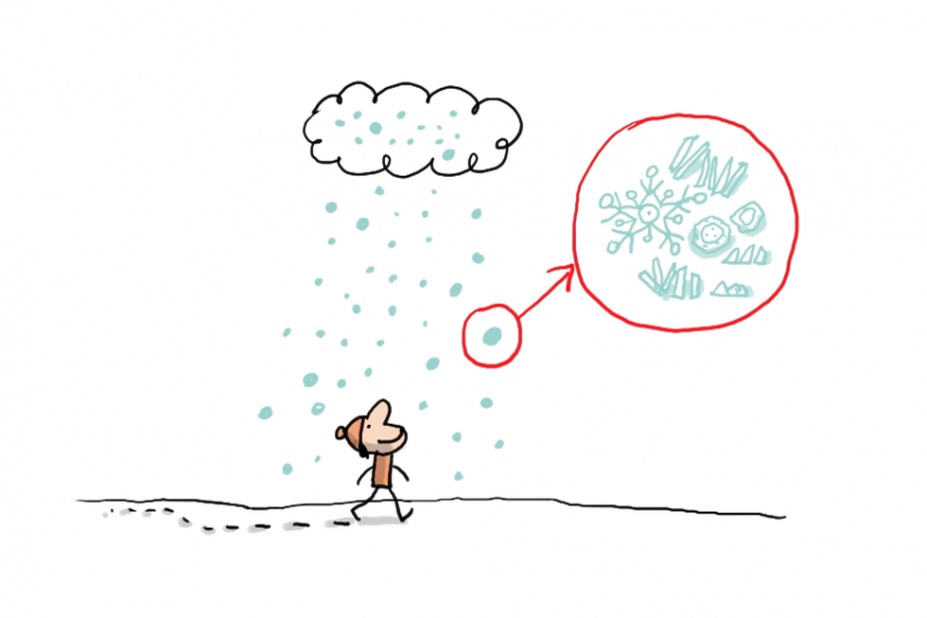Snow is made of snowflakes and each one is made up of tiny ice crystals.
If you look under a microscope, these crystals are not always star shaped… They can be prisms or hexagonal plates.
But how do snowflakes form?
Well, they form in the Earth’s atmosphere, right above us, inside clouds.
That’s where all the ingredients come together: you need dust, water vapor and above all a temperature below 0°C.
It’s so cold that when water touches a dust particle, it freezes and sticks to it.
More and more water droplets stick to it and the center of the crystal always forms a hexagon.
Then, depending on how cold and humid it is, crystals take on different shapes. The best known is the star shape.
When the crystal is too heavy, it falls slowly to the ground.
While they are falling, crystals can stick together and form bigger snowflakes.
If the temperature goes up, the snowflakes melt and become water droplets: that’s rain.
But close to 0°C, the snowflakes remain intact. It snows!
So, snowmen or snowball fights? Take advantage of this magic moment, ‘cos it won’t last.





 Retour
Retour